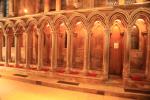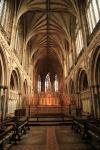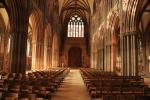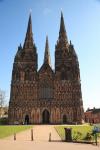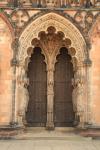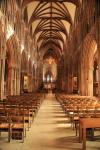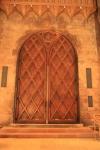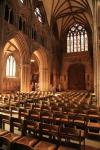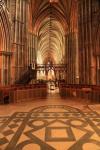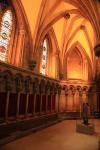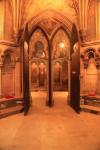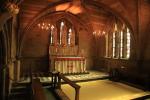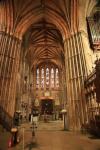Lichfield Cathedral
The cathedral was founded by the great Anglo Saxon missionary St Chad on Christmas Day in the year 700. Lichfield is amongst one of the earliest centres of Christian worship in the United Kingdom.
After the invasion in 1066 the Normans built a new cathedral although there are only small traces remaining of it today. A century or so later it was rebuilt but this time in a Gothic style and completed in the year 1340. It was besieged three times in the Civil War and very badly damaged, in which all the stained glass windows were destroyed. It took a further nine years to repair the damaged caused in that conflict.
The Cathedral was further restored in the 19th Century by Sir George Gilbert Scott. It is the only English medieval cathedral to have three spires, known locally as the ‘Ladies of the Vale’.
The cathedral is dedicated to St Chad and Saint Mary. Its internal length is 113 metres, and the breadth of the nave is 21m. The central spire is 77m high and the western spires are about 58m.
The cathedral is built from locally sourced sandstone which came from a quarry on the south side of Lichfield. The walls of the nave lean outwards slightly, due to the weight of stone used in the ceiling vaulting, some 200 – 300 tons of which was removed during renovation work to prevent the walls leaning further.
The Lichfield Gospels, also known as the Book of Chad, are the gospels of Matthew and Mark, and the early part of Luke, written mainly in Latin with some text in early Welsh and dating from around 730. There were originally two volumes but one went missing around the time of the English Civil War. It is closely related in style to the Lindisfarne Gospels. The manuscript is on display in the Chapter House from Easter to Christmas.
The Cathedral Close is one of the most complete streets in the country and includes a medieval courtyard which once housed the men of the choir.
|

